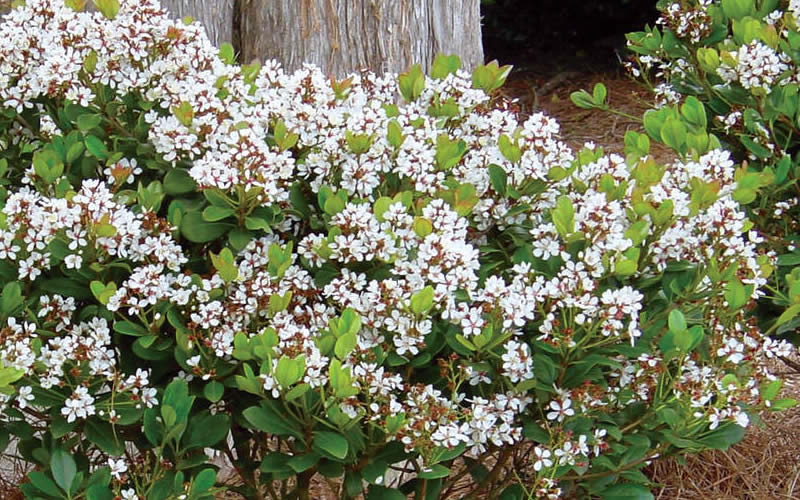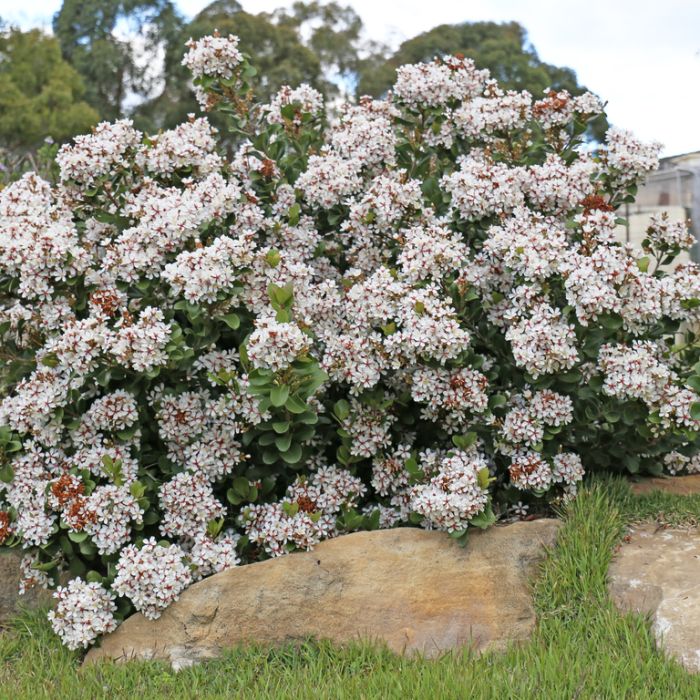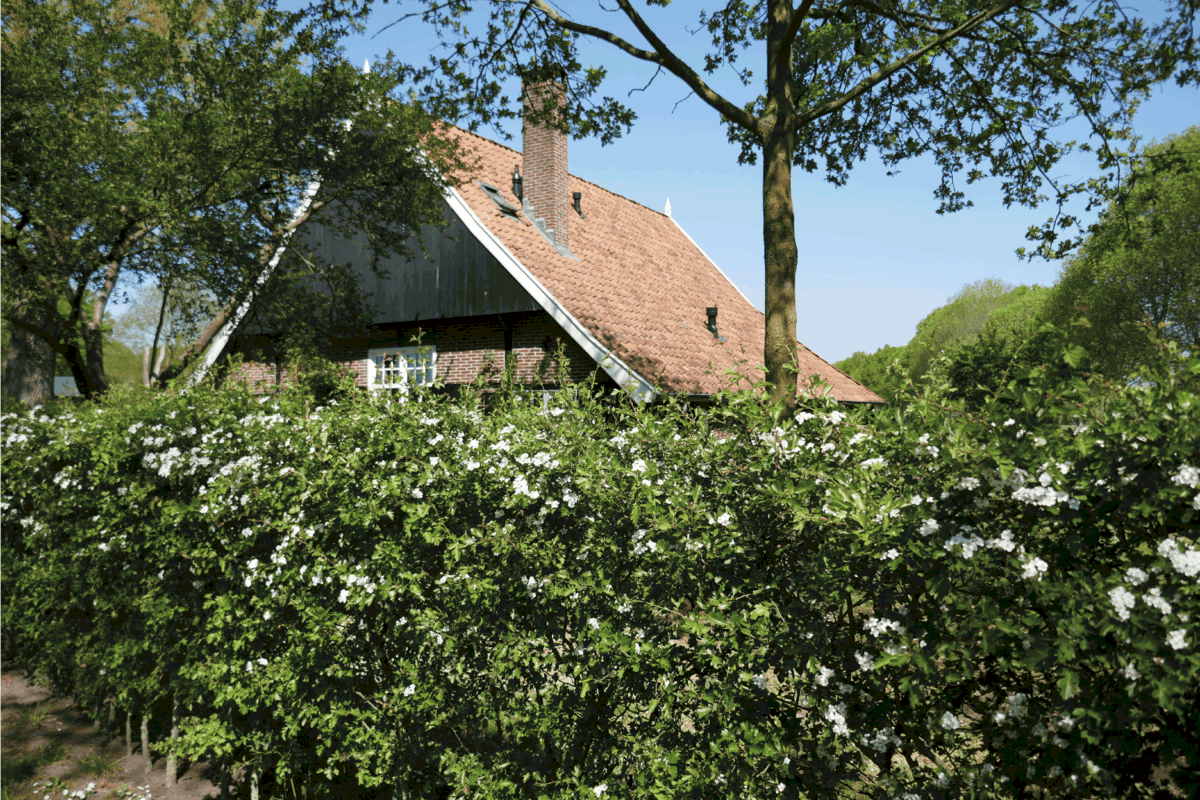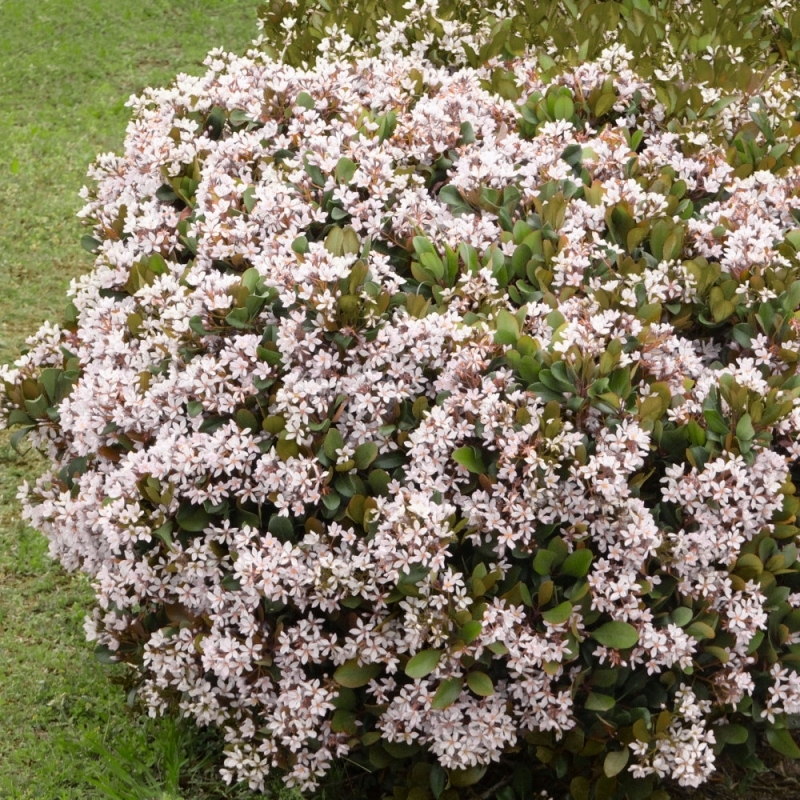Ship to: 43215 Update

Plants Filter
Current Filters
Mature Height
Sunlight
Plant Type
Hawthorn
Hawthorn refers to a group of shrubs and small to medium-sized trees belonging to the Crataegus genus in the Rosaceae family. These plants are native to temperate regions of North America, Europe, and Asia. Hawthorn is well-known for its clusters of white, pink, or red flowers that bloom in spring, often followed by small fruit called "haws." The leaves of hawthorn are typically lobed and serrated, and the bark is often gray or brown with thorny branches. Some hawthorn species have attractive fall foliage, further adding to their ornamental value.

Common Types: There are numerous species and varieties of hawthorn, with some common ones including:
- Crataegus monogyna (Common Hawthorn): Native to Europe, it is known for its white flowers and red haws.
- Crataegus laevigata (Midland Hawthorn): Also native to Europe, it has showy double flowers and red or black haws.
- Crataegus phaenopyrum (Washington Hawthorn): Native to North America, it has showy white flowers and red berries.
- Crataegus crus-galli (Cockspur Hawthorn): Native to North America, it has thorny branches and red fruit.

Care Tips:
- Sunlight: Hawthorn plants prefer full sun to partial shade. They require at least 6 hours of direct sunlight per day for best flowering and fruiting.
- Soil: Well-draining, loamy soil is ideal for hawthorn. They can tolerate different soil types but prefer good drainage.
- Watering: Keep the soil consistently moist, especially during the establishment phase. Once established, hawthorn shrubs and trees are relatively drought-tolerant.
- Mulching: Applying a layer of organic mulch around the base of the plants helps retain soil moisture and regulates temperature.
- Pruning: Prune hawthorn plants as needed to remove dead or diseased branches and maintain their shape. Some species may require more regular pruning to control their growth.
- Fertilization: Hawthorn plants generally don't require heavy fertilization. A balanced fertilizer applied in the spring can support healthy growth.

Uses:
- Ornamental Trees and Shrubs: Hawthorn species are often planted as ornamental trees and shrubs in gardens and landscapes, providing beautiful flowers in spring and colorful berries in fall.
- Wildlife Attraction: The berries of hawthorn plants are a valuable food source for birds and other wildlife, making them beneficial for supporting local ecosystems.
- Hedges and Screens: Certain hawthorn species, like Crataegus monogyna, can be used to create dense hedges and screens for privacy and windbreaks.
- Traditional Uses: Hawthorn has been used in traditional medicine for its potential cardiovascular benefits.
Hawthorn plants are valued for their attractive flowers, berries, and foliage, making them popular choices for adding beauty and interest to landscapes. They have cultural significance in folklore and traditions and are often associated with protection and enchantment. Hawthorn is a valuable addition to gardens and natural areas, providing wildlife support and becoming a focal point during their blooming seasons. When planning to grow hawthorn, consider the specific species or variety that best suits your climate, landscape design, and intended use.
Item has been added to your cart.


